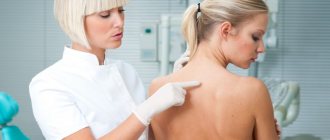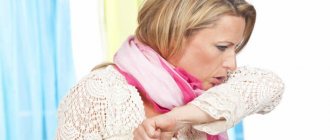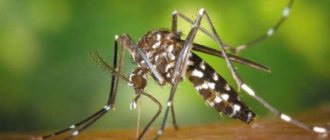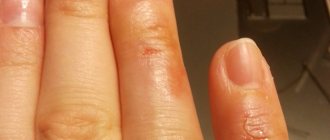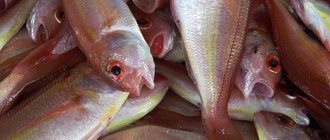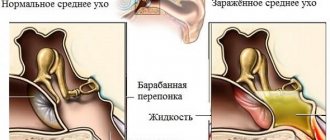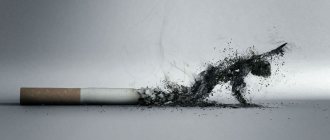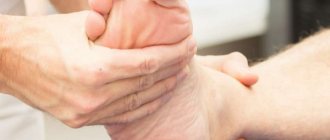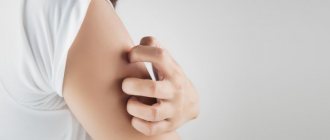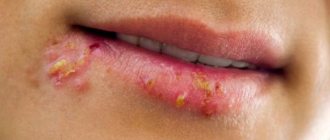On the one hand, dandruff is a mild cosmetic problem, but on the other hand, it is an indicator of a serious disease. Different types of dandruff may indicate the presence of seborrhea or problems with the gastrointestinal tract, since they are characterized by different internal mechanisms of disorder and external manifestations. To be cured, it is not enough to use shampoo - you should visit a doctor and undergo diagnostics. And only by establishing the variety can competent treatment be prescribed.
What are seborrhea and dandruff?
These are related disorders of the normal functioning of the skin cells of the scalp. A characteristic sign of dandruff is scaly detachments of skin that easily fall off the head and stain clothes.
This nuisance is caused by a pathogenic fungus that settles in the skin if its protective functions are reduced and
the immune system cannot repel harmful organisms.
It can also be caused by mechanical damage to the skin. The fungus accelerates the life cycle of the cells of the upper epidermis, which is why they die prematurely without being completely dehydrated.
Seborrhea is a disorder of the secretion of the sebaceous glands. Accordingly, it manifests itself in places where sweat and sebum are most actively secreted, including on the scalp. Read about seborrhea and its types below.
As a rule, this is accompanied by a violation of the protective functions of the skin , which predisposes it to infection with a fungus. Therefore, seborrhea and dandruff are integral companions of each other, so much so that many consider these two words to be synonymous. But, as we have seen, this is not entirely true.
Prevention
To halve the risk of developing seborrhea and dandruff, you need to follow two simple rules.
✔ Sunbathe more often. Ultraviolet light in small doses is beneficial for the skin. ✔ Feels calmer about life. Frequent worries about trifles provoke dandruff. ✔ Eat more fruits, vegetables and sea fish. ✔ Take multivitamins and Leuzea extract.
Sea buckthorn helps in the treatment of seborrhea, and therefore dandruff. It is necessary to include in the diet not only sea buckthorn berries, but also a decoction of its young branches. This decoction can also be used to rinse hair and wipe the scalp.
If, despite all your efforts and efforts, dandruff continues to bother you, you need to seek help from a dermatologist.
Varieties
Seborrhea can be oily, dry and mixed . These types of seborrhea differ in the direction of the secretion disturbance: either too much sebum is produced, or too little is produced. The course of dandruff depends on the type of seborrhea.
Types of dandruff on the head, see photo below:
Fat
This disease primarily affects the skin of the face and scalp. The secretion of sebum is strongly tied to the functioning of the hormonal system , so its violations are likely to lead to the occurrence of oily seborrhea. Adolescents (especially boys) during puberty and older people are predisposed to it.
Women experience this disease much less frequently. In addition to hormonal problems, there are other catalysts : diabetes, neurological disorders (eg epilepsy), gastrointestinal problems , taking certain medications, diseases of the reproductive system, stress.
But the main catalyst can be considered genetic predisposition; it is this that leads to the fact that if something goes wrong in the body, it reacts by malfunctioning of the sebaceous glands.
What are her symptoms? The hair begins to become dirty and greasy too quickly (in severe forms of the disease, it sticks together into one oily tuft), the skin itches, and layers appear on it in the form of large yellow flakes, which are difficult to separate from the head.
Often, seborrhea of the back of the head is accompanied by oily seborrhea of the face, then the symptoms include excessive opening of pores (they become noticeable from afar with the naked eye), grayness of the skin (this is due to the settling of dust and dirt).
Due to the proliferation of bacteria, there may be complications in the form of acne and boils. If at this time you do not wash your hair or provide it with sufficient care, then the disease intensifies, and the peeling of the skin becomes more and more active.
At the same time, the skin tightens, which may seem paradoxical, but the increase in oil content is accompanied by dehydration, so trying to get rid of the disease with drying products is an extremely foolhardy idea. The further course of the disease negatively affects the condition of the scalp - the hair begins to fall out , becomes brittle and thin. Also, the flakes on the head turn into a scaly crust, which can become bloody due to frequent scratching. The skin can become infected with staphylococcus, which will lead to purulent processes in its deep layers.
Oily seborrhea is not divided into any subtypes, but at the same time, the early course of the disease and the advanced course differ significantly, to the point that different types of treatment need to be applied to them.
Dry
Here, too, everything is simple - the sebaceous glands do not work well and do not produce fat in sufficient quantities.
The causes of this type of dandruff are generally identical to the causes of oily seborrhea (diabetes, hormonal disorders, epilepsy, problems with the immune system, etc.), except that vitamin deficiency and lack of nutrients in the body can be highlighted - this is more likely to lead to a disorder of the dry type , since the body simply will not have enough “raw materials” to produce the necessary secrets.
This disease can be caused by inflammation of the sebaceous glands, as the fat duct narrows, causing plugs to form in the pores. The inflammation itself is caused by a special pathogenic fungus. The role of genetic predisposition , which catalyzes other negative factors, is also This disease affects both men and women equally.
The symptoms are pronounced: brittle and dry hair, discoloration . Dry cracks form on the skin, which lead to the detachment of flakes, which easily fall off and spoil a person’s appearance. But, unlike dandruff exfoliations, they are larger in size.
It is worth noting that with dry seborrhea, the skin, deprived of the natural protection of sebaceous secretions, becomes a fertile environment for the proliferation of various fungi, including the fungus that causes dandruff. With further progression, the epidermis becomes covered with red spots called seboroids. The skin becomes tight, which creates very unpleasant sensations.
Modern medicine does not consider oily and dry seborrhea as different diseases, but considers them two stages of one pathology. This is due to the fact that the dry form of the disease more often occurs and flows from the fatty form, that is, it is its next clinical stage.
Mixed
This disease manifests itself as a combination of the two disorders discussed earlier and has similar causes for its occurrence .
Sebum secretion is disrupted differently in different areas. Most often, excessive sweating is observed in the neck and face, and the scalp, on the contrary, becomes too dry. They are characterized by symptoms of oily and dry forms of the disease, respectively.
Tubular dandruff
This is the popular name for a fungus that affects the hair and looks very similar to regular dandruff. But there is no disease with this name in medical reference books. Its distinctive feature is that small capsules are formed on the hair; outwardly, dandruff in the form of balls resembles flakes, but in fact they have a completely different origin.
This is a special form of skin fungus that mainly affects the hair rather than the skin . But it also affects the skin, causing itching and discomfort. Caused by the same reasons as regular dandruff. Note: contrary to the stereotype, tubular dandruff is not contagious.
Types of disease
There are dry and oily seborrhea. Fatty is divided into liquid and thick. It most often occurs in areas of the epidermis with a large number of sebaceous glands: on the scalp, on the face, on the chest and on the back.
Dry form
The causative agent of the disease is the fungus Pityrosporum ovale (or Malassezia Furfur). It lives peacefully among many people without causing concern. It is activated under certain conditions: physical labor, decreased immunity, tense mental or psycho-emotional state, postpartum period.
Sebum is produced, but its structure changes. It becomes viscous and stands out worse. The surface of the skin looks dry and becomes hypersensitive. The dandruff falls off and the head begins to itch. When the scales layer, yellowish, grayish or whitish sores appear. Peeling breaks the entire surface of the scalp or the area of the back of the head and crown. Hair flakes, becomes brittle, thin and dry.
Thick fat type
The skin is excessively dense, has a brownish-gray color, and elasticity is reduced. The hair is coarse and thick. At the dilated mouths of the sebaceous ducts, a plug of secretions and keratinized particles forms. If you squeeze the comedone, a thick mass is released. Sometimes comedones develop into cysts (atheromas). When the atheroma becomes inflamed, pus is released and a scar is formed.
Staphylococci and streptococci that get inside can cause severe pustular complications.
Liquid fat type
The pores are enlarged and excess oil is released from them. You have to wash your hair often, because on the 2nd or 3rd day it looks like it is greased with oil and hangs together in strands. Yellowish, sticky scales adhere tightly to the hair. The disease is often accompanied by itching. In rare cases, baldness is possible.
There are purulent complications that are more pronounced than with the dry form. Hair follicles turn into pustules; when opened, they form thick honey-colored crusts. The color of the skin under the foci of infection changes.
Mixed seborrhea
With a mixed form of the disease, part of the skin is oily, and part is dry. For example, the skin on the cheeks is dry, while the skin on the forehead, nose and chin is oily. There are cases of mixing liquid and thick forms of oily seborrhea. For example, the skin of the face has signs of an oily form, the scalp is dry.
Treatment
Prevention of seborrhea is ensured by the consumption of vitamins and minerals , regular scalp care, taking into account its type. You need to avoid stress and monitor your hormonal levels. But if the disease has already struck you, then the market offers a large arsenal of remedies that do not require special skills for their use.
These are primarily all kinds of pharmaceutical shampoos and lotions. But keep in mind that many substances are only suitable for use in oily or dry seborrhea.
Many products can be made from available products, oils and essential oils.
If the disease has gone far, then contact a trichologist , dermatologist, or endocrinologist.
As you can see, despite the significant variety of disorders of the sebaceous glands, to distinguish it it is not necessary to have any deep knowledge; a careful look at your body is enough to understand its pathology.
But if you doubt the diagnosis, it is better to consult a doctor.
It happens that on your curls you begin to notice white grains at the roots. And suspicions immediately begin to creep in, what if this is not ordinary dandruff, but unfortunate nits that can spread exponentially. So how can you tell dandruff from nits? In this article we will tell you how to identify lice larvae and not confuse them with normal peeling on the skin.
Treatment by a trichologist
Determining the type of disease and treatment methods is the task of a trichologist. He can find out why the disease occurred, the degree of development, and tell you how to treat dandruff.
Dandruff is a symptom; to eliminate it, it is necessary to regulate the activity of the sebaceous glands. They are located in the lower layers of the epidermis, so treatment must be done from the inside. The shampoo will help remove dandruff and oil from the surface. In addition, lotions and masks, vitamin complexes are prescribed.
To treat seborrhea, the doctor prescribes medications, focusing on the active substance. The following drugs can be found in pharmacies:
- Shampoos "Dermazol", "Nizoral" with ketoconazole. Used to combat fungus. They are effective at the initial stage; with prolonged use, addiction and decreased effectiveness are possible.
- Lotion "Bifon" with bifonazole. It acts similarly to drugs containing ketoconazole, but remains on the scalp longer. No resistance to the component is observed in fungi.
- "Sulsena" with salicylic acid. The product acts against dandruff, exfoliates, and prevents its formation. It does not affect the cause - the fungus.
- Shampoo "Friderm" with tar. Actively exfoliates scales, is used at the initial stage, and promotes cell regeneration.
- Preparations with sulfur, selenium and octopyrod.
Products containing several components are preferable if there is a lot of dandruff on the head. What to do if a doctor's visit is postponed? Folk wisdom will come to the rescue.
What's happened
Dandruff is a flaking of the skin underneath the hair. Its causes are malfunctions of the sebaceous glands or excessive drying of the skin. Of course, such manifestations do not pose a particular threat to the health of the owner, but they give the hair an unkempt and completely unnatural appearance.
Therefore, dandruff needs to be combated with various cosmetic methods and through proper nutrition.
They produce oily dandruff, which involves gluing of scales. Men and women experience severe scalp itching, and after washing, their hair looks dull and dirty. But there is one positive thing about this type of dandruff - it is hardly noticeable.
Important point! If oily dandruff covers large areas of the scalp, the scales begin to flake off and damage the curls. This situation can cause excessive hair loss.
The dry type of dandruff is accompanied by severe itching and the abundant appearance of white powder, which directly falls out of the hair at the slightest movement or combing.
The causative agent of severe peeling of the skin is Pityrosporum oval. This microorganism begins to actively multiply during malfunctions of the sebaceous glands, since favorable conditions are created for its existence.
The distinctive signs of dandruff are:
- small scales on the curls, which somewhat resemble white snow;
- peeling is noticeable on the scalp, accompanied by itching;
- hair color loses brightness and curls begin to fall out;
- hair acquires excessive gloss, becoming greasy (in some cases);
- if dandruff is not treated, the process of keratinization of the dermis becomes more intense, so the number of white grains increases;
- with a severely advanced form, dandruff spreads to the eyebrows and interlash space.
The appearance of dandruff is caused by the fact that little subcutaneous fat is secreted. Therefore, if you have dry skin, split ends and brittle hair, be prepared for dandruff.
It is important to distinguish dandruff from other dermatological diseases, namely:
- psoriasis, which appears along the edge of the hairline;
- ringworm, which has clear boundaries and local foci;
- streptoderma, which at first is very similar to dandruff, but over time manifests itself as ulcers and the formation of a yellow crust;
- seborrhea pemphigus.
Dandruff is very easy to confuse with lichen , especially at first. But over time, the latter turns into a circle or oval, at the location of which curls fall out and pus appears.
Signs of seborrhea
The clinical picture of the disease depends, first of all, on its type, however, there are a number of general signs, the totality of which indicates the presence of the disease:
- increased number of light scales on the scalp. In this case, the scales can either easily separate from the surface of the skin or fit tightly to it and the base of the hair.
- Changes in skin condition. It becomes oilier, or, conversely, excessively dry and irritated.
- Changes in the condition of the hair (hair quickly becomes dirty and falls out profusely).
- Feelings of discomfort (severe itching, burning), inflammation and wounds appear on the scalp.
Nits on hair: their difference from dandruff
People consider lice eggs to be nits, but from a medical point of view, they are the white shells in which the insect lives. They are attached using specially produced glue at a distance of a couple of centimeters from the hair roots.
It is not possible to eliminate the unfortunate cocoons with regular hair washing. The sticky substance securely fixes the egg on the hair, so even if you try to remove it with your nails, you cannot always achieve the desired success.
It happens that parasites are removed from a person infected with lice. If he still has nits, then over time new inhabitants will appear on his hair and you will have to deal with them again. Therefore, it is recommended to use products to combat lice and nits.
If you have nits you:
- you will see millimeter grains on the head, reminiscent of dandruff;
- you will feel an unpleasant itch;
- You will notice that your curls seem dirty even after washing.
As you can see, at first glance, nits are very easy to confuse with dandruff.
Let's look at the phases of the life cycle of a blood-feeding parasite. There are 4 stages:
The adult sucks human blood and actively mates. During one inspection, from 50 to 100 nits can be detected on the head of a person affected by lice, which immediately lead an independent lifestyle.
Important! The incubation period for the appearance of nits is 5–8 days from the moment the insects mate. The temperature for nit maturation should be high, 30–35 degrees.
As soon as the larva, imprisoned in the shell, matures, it pushes through its cocoon and gets out. When the parasite leaves, the nit does not dissolve and continues to be on the hair.
Thus, if you don’t fight the bloodsuckers in time, you can get a heavy millimeter snowball on your head and, even worse, develop serious infections.
Every day, one female louse can lay up to 4 eggs. Each of them is located at a distance of 1 cm from the roots; as the hair grows, the capsule moves down towards the ends. The nit itself turns into a louse after 14 days.
Distinctive characteristics
It is not very difficult to distinguish nits from dandruff. You just need to provide good lighting (it is better to use a lamp to direct the light flux in the desired vector), arm yourself with a fine-toothed comb and, preferably, a magnifying glass. Take half an hour of free time to make sure that you are not infected with parasites.
By location
Nits are located at a distance of 1–3 cm from the hair roots. Since high temperatures are required for the offspring to mature, female lice instinctively lay eggs in warm areas - on the back of the head, behind the ears. Dandruff is located throughout the hair.
How to distinguish whether a parasite has hatched from an egg or not
As we have already said, even after the lice leave the capsules, the shell is still fixed on the hair and, if certain actions are not taken, only goes away when it falls out.
The difference between nit capsules with and without an individual:
- a non-living capsule is deprived of its original shape, so it is flat;
- a dead nit has a dull color, while a live one is shiny;
- after the louse emerges from the cocoon, the color changes from pronounced white to cloudy with a yellow tint;
- If you press a fingernail on a live nit, a characteristic cracking sound will follow.
What to do if you have head lice
If you suspect head lice, the best decision would be to go to a doctor, who will conduct an examination and prescribe the correct treatment.
If for some reason you do not want to see a doctor, go to the pharmacy, where they will recommend that you buy the right product to eliminate nits and lice.
To avoid infecting others, take the following precautions:
- do not go to crowded places and enclosed spaces;
- tell people you have had contact with recently about your illness;
- You should check for lice those who live in the same room with you;
- activate hygiene: clean, wash linen and clothes, as well as clean bedding and carpets;
- It is prohibited to use other people’s personal hygiene items - combs, towels, hats and bed linen.
Attention! If you are diagnosed with body lice, immediately carry out disinfestation.
Thus, guided by our recommendations and photos, you can easily distinguish dandruff from nits. Remember, timely detection of nits is the key to a quick recovery from head lice.
Useful videos
How to remove lice and nits from hair.
For adults, dandruff is almost natural. Approximately every month, the upper stratum corneum of the skin changes; old scales are separated from the epidermis.
However, this natural phenomenon can also be the cause of other, serious skin problems. Therefore, it is important to distinguish between a normal physiological process of the body and a disease.
It is worth noting that dandruff in children is extremely rare, unlike in adults. When the body functions properly, skin cells appear in the basal layers and move towards the upper ones.
During the entire journey, about 25 days, they become thinner, dry, and in their keratinized, completely dead state, invisible to the human eye, fly off the head when washed.
If the renewal process is accelerated to 7-10 days, the cells do not have time to reach their completely dead state and appear in the form of noticeable white plates that stick to the hair and each other.
With dandruff, the scalp may itch, but there should be no redness, and especially no bloody wounds; this is a sure sign of other, more serious diseases. Their presence can only be confirmed by a specialist: a dermatologist or trichologist after passing the necessary tests.
If the color of the skin scales is not white, but yellow, then this is another form of dandruff - oily. It happens that the sebaceous glands work more intensely than necessary; in this case, sebum forms a sticky surface on the hair roots, which is why the yellow color appears on the scales.
Symptoms of dandruff
When dandruff flakes appear, all the symptoms of scalp irritation are observed, which appears due to the microorganism Malassezia globosa. In response to it, natural sensations arise for the entire skin of the human body:
- itching;
- dry skin;
- red pigmentation;
- enhanced exfoliation.
The very first sign of dandruff is itching. A more obvious sign, the appearance of a large number of white scales on the surface of the hair and clothing follows closely behind (see photo above).
Types of dandruff
beautiful healthy hair without dandruff
Dandruff as a disease has its own name - seborrhea . However, seborrhea refers to severe forms of exfoliation of skin particles, with inflammation of the skin and sebaceous glands. There are two types of dandruff:
- dry;
- fat.
In the dry form, the scalp feels dry, even a short time after washing. The sebaceous glands do not secrete well, causing the scalp to become very dry.
The fatty form, on the contrary, occurs when there is abundant secretion of sebum by the exocrine glands. The abundant fat secreted by the glands clogs the channels, inflammation of the nerve endings appears, the skin begins to itch very much, and atheromas form in some places, which sometimes require surgical treatment.
Causes of dandruff
The occurrence of dandruff can indicate some kind of malfunction in the human body. There are many reasons for the appearance of dandruff, but it is customary to highlight a group of the most common:
- dry skin;
- seborrhea;
- fungus;
- hormonal changes;
- stress and diets;
- decreased immunity;
- disruption of the digestive system.
One of the most common causes of nasty white crusts on the scalp is dry skin. Winter is the ideal time for the manifestation of such a disease.
In cold weather, a person consumes less liquid, blow-dries his hair more often, and uses heaters, all of which leads to dry scalp and hair.
Getting rid of dandruff with medications
At home, medications from the pharmacy will help you quickly get rid of dandruff.
- A proven, effective product, Nizoral shampoo. It contains an active substance that reduces the growth of harmful microorganisms that contribute to the development of seborrhea-based dermatitis. The product is applied to a wet head with massaging movements. Duration of application is no more than three minutes. Then the hair is washed with shampoo and water at room temperature. The entire process must be repeated twice a week for a couple of months.
- Sebazol shampoo will help eliminate dandruff. It has antimicrobial and antifungal effects, eliminates the main causes of the disease by targeting the affected areas of the skin. It is used for dandruff, seborrheic dermatitis, pityriasis versicolor, seborrheic psoriasis. Regular use prevents recurrence of the disease and improves the overall condition of the skin. Apply with foaming movements to damp hair. Duration of application is 5 minutes, then rinsed thoroughly with water. To effectively combat dandruff, remove causes and treat it, it is used in two stages. The first is the removal of symptoms. Apply twice a week for one month. At the second stage, the result is consolidated and prevention occurs. Apply for a month once a week.
- Lotion "Bifon" is a completely natural product, it contains panthenol, which eliminates excessive dryness of the skin, and other active substances to achieve an antifungal effect. The product is easy to use and does not require rinsing. Apply to hair using rubbing movements. For reliable results, it is necessary to apply several times a week for a month.
Classification of the disease
Seborrhea occurs as a result of impaired sebum secretion in the scalp . Depending on the manifestations of the disease, several varieties are distinguished.
Thick oily seborrhea
The main cause of the disease is considered to be hormonal imbalance, in particular, an increased amount of male sex hormones. Thus, young and mature men (over 20-25 years old) are at risk.
Male hormones cause the secretion of the sebaceous gland to thicken, as a result of which the lumen of the gland becomes clogged. The main signs of this form are considered to be the expansion of skin pores, changes in its color and oiliness (the skin acquires a grayish tint and becomes oilier).
Excess sebum serves as a source of nutrition for bacteria; accordingly, they begin to multiply more actively, which leads to disruption of the microflora. Excess sebum sticks together flakes of dead cells, resulting in large dandruff that is difficult to separate from the surface of the skin.
You can learn more about oily seborrhea here:
Liquid oily seborrhea
This form occurs more often in women (starting from adolescence). The abundance of female sex hormones causes dilution of sebum, increasing the amount of its production.
Signs of the disease are the formation of small light lumps on the scalp, which are difficult to separate from its surface.
The skin becomes oilier, the hair becomes greasy. Patients often experience severe itching.
Dry seborrhea
The cause of the disease is considered to be dysfunction of the sebaceous glands, when the secretion is too insignificant. As a result, the scalp becomes drier and flaking occurs.
A lack of sebum leads to changes in the composition of the skin (proliferation of the upper layer of the epidermis), resulting in a greater number of dead cells , and, as a result, increased formation of scales. The scales are small, dry, and easily separated from the surface of the skin.
About dry seborrhea, watch this video:
Seborrheic dermatitis
It occurs when the main symptoms are accompanied by an inflammatory process. In this case, reddish areas with more abundant peeling appear on the scalp.
The patient feels severe itching, often blood ulcers form on the affected areas of the skin as a result of scratching.
Next, a dermatologist will tell you about seborrheic dermatitis:
Getting rid of dandruff with folk remedies
Time-tested folk remedies will tell you how to get rid of dandruff at home. Their composition is based only on natural plant substances.
- Tincture of calendula flowers. If your dandruff is oily, you need to apply the tincture to the roots of your hair two or three times a week. After application, it is important to wrap your hair in a towel. Rinse off after half an hour with water at room temperature.
- Nettle infusion. Nettle should be infused for 24 hours before use. Ingredients of the tincture: one glass of boiling water, a tablespoon of nettle leaves, previously finely crushed. Treatment must be continued for 3 months twice a week. The tincture is rubbed into the scalp; there is no need to rinse your hair.
- Fermented milk products will help you easily eliminate the problem of dandruff at home. Kefir, yogurt and even yogurt, when applied to the surface of the head, prevent flaking. And if you add a pinch of pepper to these products, you get an effective antifungal agent. It is better to use a ground product. The mixture is prepared from two tablespoons of pepper and 150 grams of fermented milk product. The finished product is applied to the base of the hair, after which the mask must be left for an hour, then thoroughly washed with shampoo.
- Burr oil. It will help you quickly cope with the problem of dandruff and its unpleasant symptoms at home. The oil is gently rubbed into the scalp using massage movements and left for an hour. After a while, the hair should be thoroughly washed with shampoo. Treatment is carried out for three months several times a week.
- Olive oil. Regular olive oil, slightly heated and brought to room temperature, will be an excellent assistant in the fight against dandruff. It moisturizes dry skin, obviously preventing flaking, and glues exfoliated scales, which will slow down their loss. The oil should be rubbed in daily before bed. To keep the bed clean, hair is covered with a film or bag. In the morning, wash off the oil with shampoo, and rinse your hair with warm water.
- Regular baking soda. Inexpensive, accessible to all means to combat dandruff. Soda has an excellent antifungal effect, and its fine texture allows you to remove tiny particles of scales stuck in the hair. To use this product, just add a tablespoon of the product to a portion of shampoo and wash your hair as usual. In addition, baking soda will help restore the oil balance of the scalp.
- Lemon juice. Lemon juice helps regenerate the acid balance of the scalp, which leads to the elimination of white scales and the cessation of itching. Coconut oil is well used in combination with it; it has an antibacterial effect and eliminates fungi. To prepare a mixture of lemon juice and coconut oil, you need to maintain the proportions of 1/5, adding coconut in a larger volume. The product is applied to the hair roots for half an hour, after which it is washed off with water and washed thoroughly with shampoo.
- Henna. To treat early manifestations of dandruff, this remedy will be effective; in later stages of the disease, other, more effective remedies are needed. Henna has an antifungal effect on the scalp and eliminates excess fat. To prevent hair color from changing, it is necessary to perform treatment only with colorless henna. To eliminate dandruff, a mixture is created: a teaspoon of henna mixed with the same volume of tea powder, lemon juice and hair oil. The resulting substance is applied to the hair and then washed off with shampoo.
Dry dandruff
Otherwise known as dry seborrhea, it is caused by insufficient sebum secretion due to its high viscosity. This type of dermatosis most often occurs in boys and girls who have not reached puberty. Although with some diseases it can also affect adults.
- the scalp is dry, sensitive, very flaky, itchy;
- intense fine-plate dandruff is formed;
- hair is thinning, falling out, split ends.
Dead epithelial scales stick to each other, forming crusts on the surface of the scalp, causing a feeling of tightness and irritation of the skin.
Why is this happening?
Regeneration of scalp tissue usually lasts for 25-30 days. Dead cells are sloughed off and removed when you wash your hair. The yeast fungus Pityrosporum Ovale, which inhabits the epidermis and feeds on sebum, is responsible for regulating the process.
If a failure occurs in the body’s established functioning system, live bacteria multiply and the regeneration process occurs much faster – within 2-5 days. Dead scales accumulate, stick together into large flakes and settle on the hair in the form of dandruff.
Causes of dry dandruff
An increase in the number of pathogenic bacteria can be caused by the following reasons:
- regular stress;
- poor nutrition;
- inappropriate shampoo;
- lack of vitamins and microelements;
- disturbances in the functioning of the endocrine system;
- chronic lack of sleep;
- sudden climate change;
- taking medications;
- serious illnesses.
How to treat
To eliminate dandruff, you must first of all find the root of the evil - to establish the reasons for its formation. A trichologist will help you find the truth, he will conduct an initial examination and prescribe the appropriate tests. You may need the help of other specialists, since dandruff often accompanies depression, diabetes, pathologies of the stomach or intestines and other diseases.
In any case, you need to give up styling and coloring products during treatment, minimize the use of a hair dryer and curling iron, and also forget about low-quality shampoos containing aggressive detergents.
Replace fatty and sweet desserts with fruits, fatty and smoked meats with lean boiled poultry, add more fresh vegetables, protein and whole grains to your diet. You should also avoid alcohol.
Several folk recipes for dry dandruff
- Mix 2 egg yolks with the juice of half a lemon and 1 tsp. burdock oil, apply the mixture to the partings, wrap your head with a warm towel. The mask nourishes dry skin and restores its acid-base balance.
- Pour 20 g of dry crushed burdock root into 200 ml of water and cook over medium heat for 15-20 minutes, let the broth brew, then strain. Rub into hair roots every time after washing. This balm soothes irritated scalp and relieves itching.
- 2 tbsp. l. pour boiling water (1 liter) over linden flowers and leave for 30 minutes. Strain the resulting broth and rinse your hair after washing 2 times a week.
Dandruff in a child: safe folk remedies
Dandruff in a child, as mentioned above, occurs extremely rarely and is caused by a malfunction of the body. To effectively eliminate white crusts, you need to identify the problem in the baby’s health, and then begin local treatment.
To eliminate skin diseases, you need to introduce the required amount of fiber into your diet:
Also create comfortable conditions for sleep and relaxation.
If white crusts appear in children, the answer to how to get rid of dandruff at home will be folk remedies. They are safer for the child’s body than analogues from pharmacies.
Among the most effective means:
- Infusions of mint, anise, parsley and nettle.
- Vegetable oils:
- linen;
- olive;
- grape
After applying them, it is necessary to rinse off the substance with thick shampoo foam.
- Tincture based on cedar oil, flax and almond oil:
- add a tablespoon of green tea, eucalyptus and marjoram leaves to the heated oil;
- the mixture is infused in complete darkness for about two weeks, stirring once a week;
- the finished mixture is applied while bathing, putting a shower cap on top;
- after 15 minutes, the head is thoroughly washed with shampoo and warm water (instead of shampoo, you can use decoctions of chamomile, nettle or calendula).
Even small efforts to treat dandruff will not take long. Both herbs and shampoos based on them, as well as pharmaceutical drugs, are effective.
If the problem persists for a long time, do not delay going to the doctor for advice.
Treatment of dandruff with drugs
Dandruff can be treated with special lotions and medicinal ointments. There are special tablets that can help solve this problem.
But any medications should be taken only after consulting a dermatologist. Under no circumstances should you self-medicate with medications.
The following medications for external use are strictly for reference only. Do not self-medicate, the consequences of which may be disastrous.
Antiseborrhoeic agents for external use
✿ Azelaic acid ✿ Skinoren ✿ Ketoconazole ✿ Keto Plus ✿ Mycozoral ✿ Nizoral ✿ Oronazole ✿ Skin cap ✿ Friederm Tar ✿ Friederm Zinc
Prevention of dandruff
In order to prevent a disease such as dandruff on the head and maintain healthy hair for as long as possible, it is enough to follow simple rules of hygiene and monitor the functioning of your body.
By following a number of simple rules, you can forget about this unpleasant disease.
- Healthy eating. The whole body will benefit from reducing the consumption of fatty, sweet and fried foods, and giving up large consumption of alcohol, cigarettes and carbonated drinks.
- Drink plenty of fluids. Normal water consumption for an adult is 1.5-2 liters per day. This helps cleanse the body and normalize its functioning.
- Hygiene. Don't let anyone use your combs, and don't use someone else's.
- Proper care. Refusal from frequent use of fixing gels, sprays, mousses and other cosmetics in favor of healing masks will benefit the scalp and hair.
- No, stress and lack of sleep. Anxiety, irritability and fear greatly undermine the functioning of the body, as does lack of sleep. They lead to a decrease in immunity, disruption of processes that support life, and the emergence of various diseases that a strong, healthy body could easily cope with.
Follow these simple rules and you will forget about dandruff.
General recommendations for treating dandruff on the head
The appearance of dandruff is difficult to miss. White scales appear on clothes and hair, the scalp is constantly itchy, curls become brittle, dry, and look untidy.
We will tell you in detail how to cure dandruff on the head in our article. Look at the most honest Top 5 rating: Professional hair clippers
Therefore, dandruff on the head must be treated to prevent more severe manifestations such as larger scales that look like snow flakes, yellowish-gray crusts and spots that lead to the development of seborrheic dermatitis.
Trichologists recommend approaching the problem comprehensively, with treatment selected individually based on the severity of the disease.
The most effective methods of treating dandruff are presented in the table.
| Remedy for treating dandruff on the head | The main components included in the composition | What effect do they have? |
| Medicinal shampoos | Clotrimazole, ketoconazole, zinc pyrithione, salicylic acid, medical tar | They have an antifungal, antiseptic effect, exfoliate dead cells, relieve itching |
| Medications | Sulfur, selenium disulfide | Normalize the condition of the scalp, nourish it, exfoliate dead cells and, as a result, effectively get rid of the problem |
| Oil wraps | Burdock, castor, flaxseed, sea buckthorn and tea tree oil | Nourishes the skin, removes formed scales, has an antifungal effect |
| Homemade masks | Egg yolk, mustard, onion, honey, kefir | Neutralizes dandruff, cleanses the skin, nourishes it, strengthens curls |
| Folk recipes | Salt, apple cider vinegar, tar soap | Salt is a natural peeling agent that removes dead particles. Apple cider vinegar is good for fungal infections. Tar soap – cleanses, has antifungal, anti-inflammatory effects |
Be careful! When choosing a product, you need to consider the type of dandruff - dry or oily. For example, mustard is effective for oily dandruff, and kefir is effective for dry dandruff. In addition, it is worth remembering that some ingredients can cause an allergic reaction (honey, various oils, shampoos based on ichthyol, clotrimazole).
